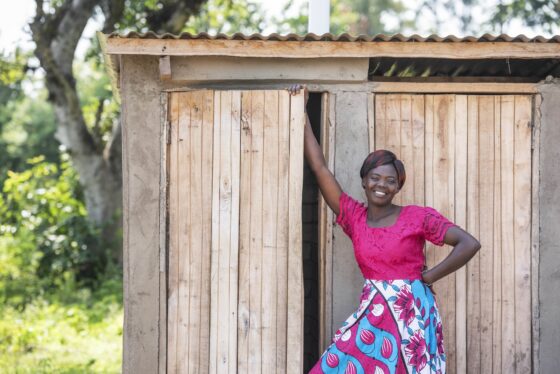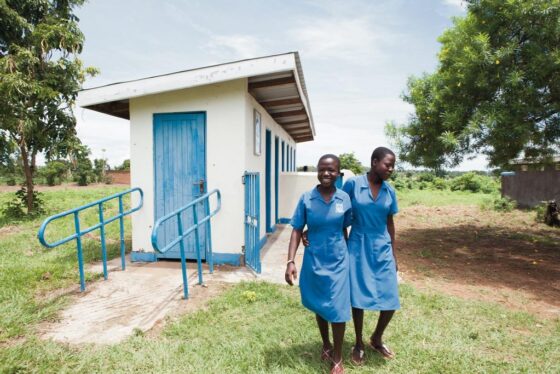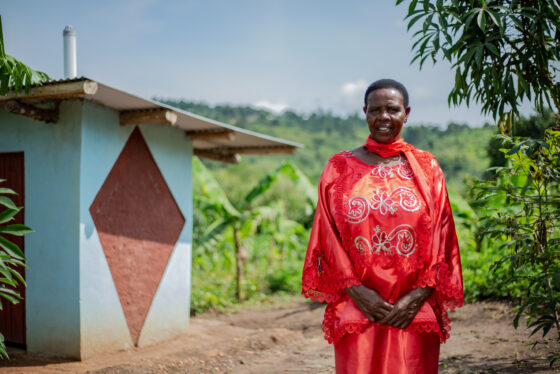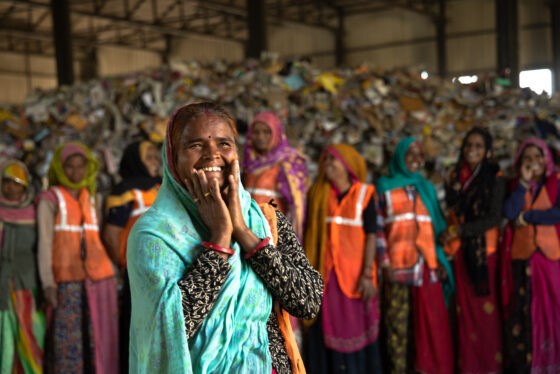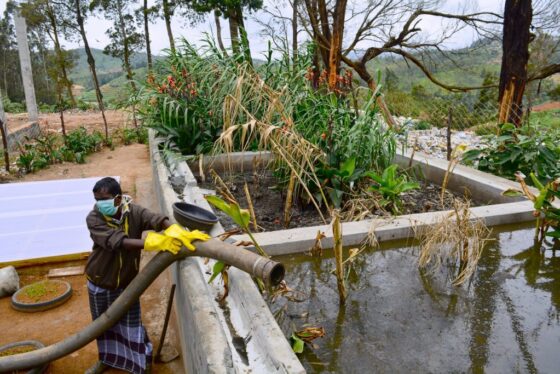Our approach
We focus on connecting the following four key actors in local markets that are essential for sustainability and potential scaling of results:
- Customers (demand side): Through marketing in waste management, customers have developed a demand for improved services and products in waste management. In sanitation and waste markets, this can include, for example, demand for an improved toilet, recycled plastic products, or waste collection services.
- Businesses (supply side): Local entrepreneurs are trained to meet their customers’ demand. They are incentivised to offer cost-effective and good quality services and products. In sanitation and waste markets, this can include those who construct safe toilets, collect and process solid waste, private faecal sludge collectors, and processing plants.
- Financiers: Financiers, such as microfinance institutions and impact investors, see market opportunities in financing both customers and businesses. Consequently, they develop and promote loan and credit products for customers and businesses.
- Government: The government has the responsibility to develop and reinforce laws and regulations in waste management standards and stimulates market growth through leadership in awareness creation and proactive engagement in public-private partnerships.
The Diamond model is a multi-stakeholder approach developed by WASTE to build local systems that can reach scale. These four stakeholder groups are just the beginning. However, they highlight the different corners of society that must work together to create long-lasting impact.
WASTE’s Diamond Model is a philosophy that can be contextualised to local needs. It offers a flexible and comprehensive model that increases the likelihood of sustainable sanitation and solid waste management systems, with a focus on low- and middle-income countries.
Though WASTE is currently focusing this approach within the thematic areas of sanitation and waste management, our Diamond Model can be applied to many critical areas of development that cities are trying to tackle. This can include, for example, water, housing, tourism, transport, renewable energy, amongst others.
We developed the Integrated Sustainable Waste Management (ISWM) approach in 1993, as a tool to understand the existing and necessary ‘who’, ‘how’ and ‘what’ elements are present and needed in a given [waste management] system.
The ISWM approach helps to analyse three important dimensions, which were rarely considered at the time.
- Who are the current stakeholders that are present? Who are the key stakeholders that must be engaged?
- How are the service and value chains of the current system working? How could these be strengthened?
- What is the current status of critical enabling aspects: Technical, environmental, health, financial, economic, socio-cultural, institutional, legal and political? How can these be enhanced?
We work on understanding each of these dimensions and how they relate to each other to identify solutions. We work to improve the sustainability of local systems by addressing the root of a problem rather than symptoms.
To achieve our ultimate goal of sustainability after projects have ended, local stakeholders must have an interest in and take ownership over a given intervention. We bring stakeholders together and build capacity locally to ensure impact that is lasting, accessible for all, and locally relevant.
WASTE’s Diamond model facilitates and supports key stakeholders to work together for sustainable development
We strengthen local systems especially in sanitation and waste management
We support self reliance of the stakeholders. What means we never interfere with the interconnections between the different stakeholders
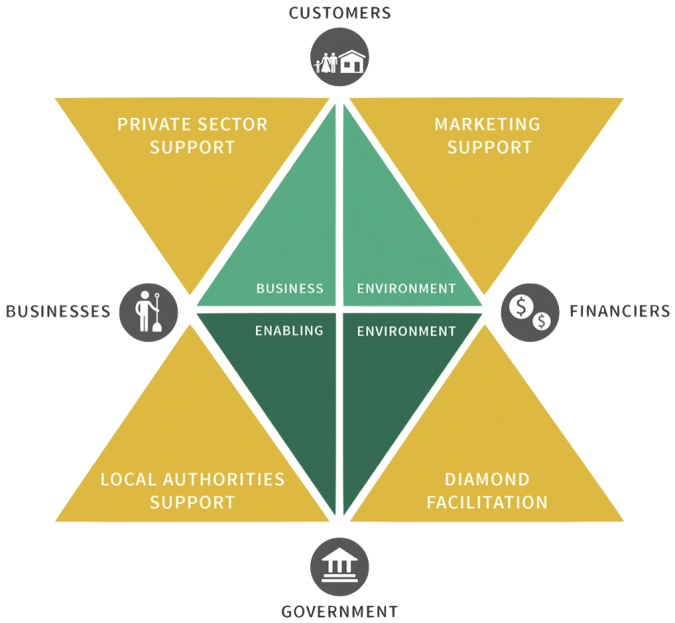
Private sector support
We have developed tools to strengthen entrepreneurial management skills through technical skills training, capacity building, and business support, in sanitation and waste management. We guide and develop practical tools and inclusive solutions for entrepreneurs to develop and run their businesses so they are able to meet the demand for basic services.
Developing inclusive solutions to urban challenges
Whether through innovative financing or brick-and-mortar engineering feats, our team of experts works with local partners to sharing learnings from across our global network of partners to adjust interesting technologies and pilot innovations to make basic services accessible for all.
Working with local authorities
We examine and analyse the different elements present and lacking to identify opportunities to improve urban sanitation and waste management. We have developed tools such as the Smart Qualitative Urban Assessment Tool (SQUAT) to better understand both our qualitative impact and how a city’s total waste management system is functioning.

